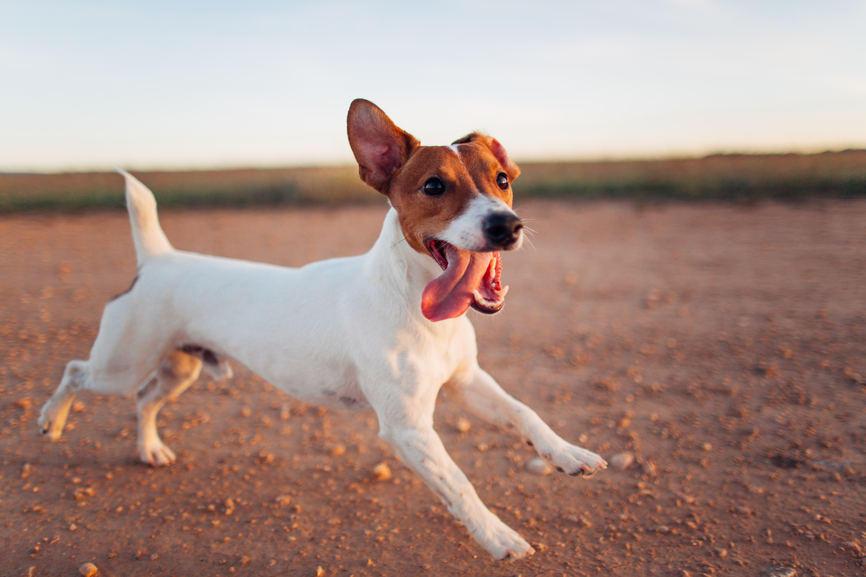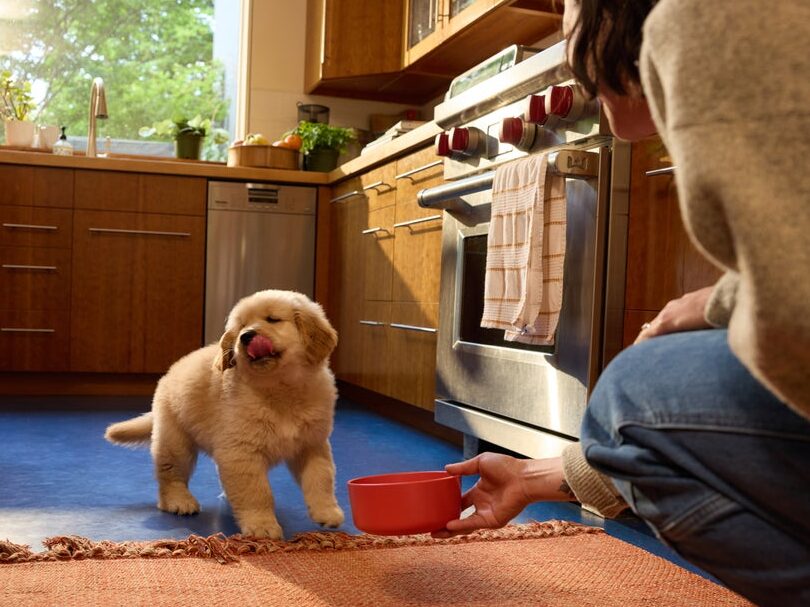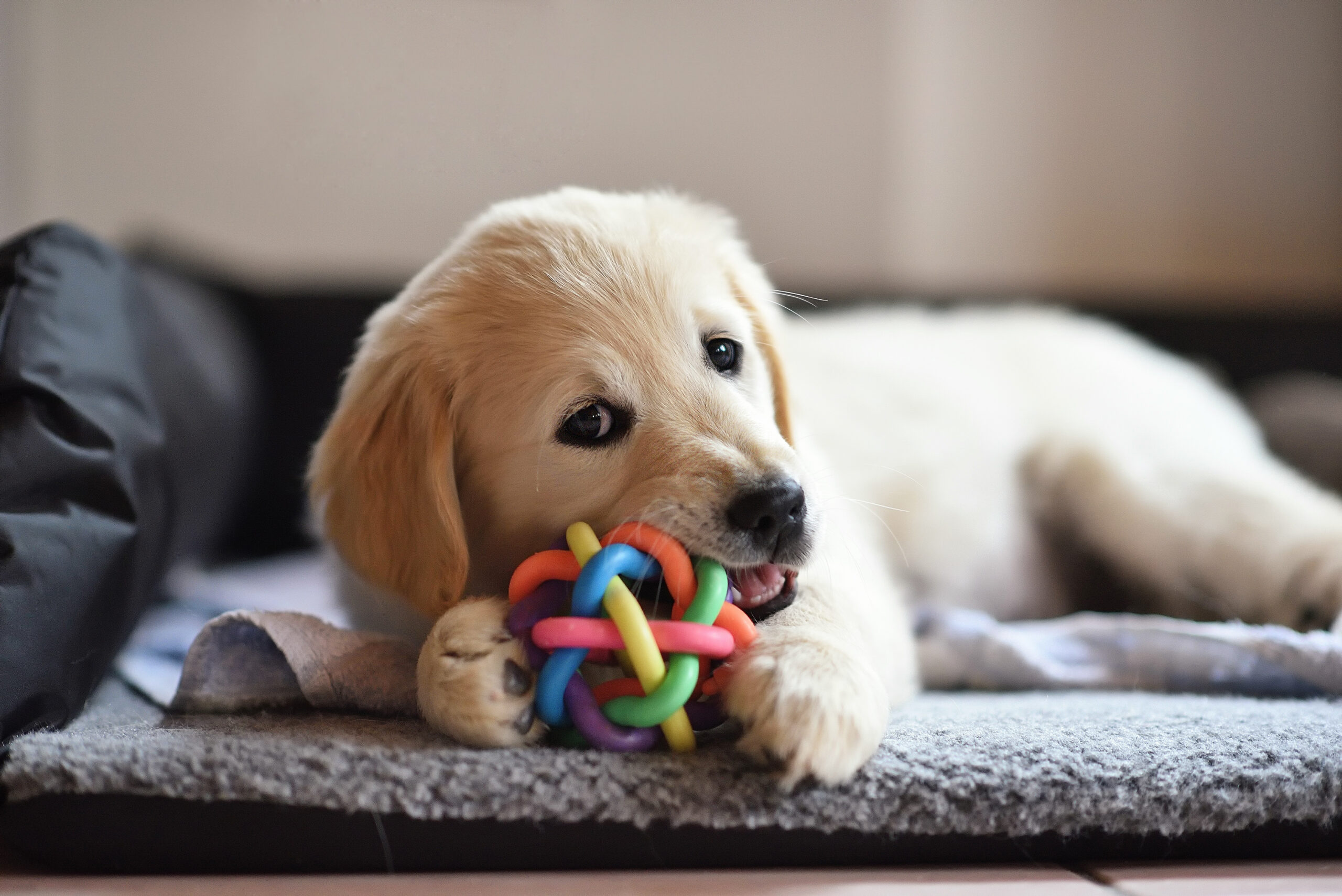Hey Ollie blog readers! We’re offering you an exclusive 60% OFF your starter box! Try now!
Many pet parents have experienced that all-consuming anxiety that comes with having their pup wiggle out the front door, get loose from the leash, or go missing from the backyard.
Instantly your mind goes to the worst possible scenarios—and then you’re frantically searching the neighborhood, desperately calling your dog’s name! We spoke to Scott Sheaffer, CDBC, CPDT-KA, a dog behavior specialist and founder of USA Dog Behavior about how to keep your best friend from doing a disappearing act.
Why do dogs run away?
-
- Generally, dogs try to escape because of the novelty of being off the
-
- . The vast majority of urban and suburban communities have a leash law so unless you have a big backyard there are probably not a lot of places your dog can safely be off-leash. Other reasons your pup might run include:
Boredom
If given the opportunity to head out and explore, your pup may just take it. This is especially true of dogs who don’t get a ton of off-leash playtime. They might just take the opportunity if it presents itself. To combat this, make sure your pup is getting plenty of play and exercise.
Separation Anxiety
You may see it as running away, but your pup might see it as looking for you or another companion. Separation anxiety is another reason you might see your pup bolt if given the chance.
Sex Drive
If your pup isn’t spayed or neutered, he or she may head out looking for a mate. While this behavior is natural, unsupervised running around the neighborhood is obviously not safe.
Prey or Scent Drive
If your pup has an especially high prey or scent drive, he or she may head out to follow their nose or get that squirrel or bird that is taunting them from the backyard. If you know your pup has a high prey drive or scent drive like a beagle or springer spaniel, you will probably not want to let them outside off-leash unless they are in a very securely fenced-in area.
If your pup is running out the front door
There are a few options for how to banish this behavior, according to Shaeffer. First off, if you have children, make sure that they know the rules about opening the door and letting the dog(s) out. The next thing you can do is remove the novelty of being off the leash. Hang out on your front porch or stoop letting your dog wander around on a retractable leash. Just sit for a half-hour regularly and let your dog get used to it. It also helps to teach your pup a command like “go to place.” Pick a spot about 15 feet from the door where your dog sits and wait while you open the door.
If you’re outside and your pup gets off their leash
Again it’s a novelty issue. “If you take a dog that hasn’t been outside and doesn’t get a ton of exposure to novel experiences, they’re itching to see what’s out there. When they go outside they want to explore and get overly excited,” Sheaffer says.
How to prevent it: The more exposure you give your dog to the outside world, other people, and other dogs, the less interested they’ll be in breaking free and running after rogue Frisbees. So walk your dog frequently in different environments. As a pet parent, your relationship with your dog is important too. “When your dog gets to spend quality time with you and that bond exists, you can’t get rid of them. They’re really social animals,” says Sheaffer. Meaning if they do wiggle out of their collar or off the leash they’ll still want to stay by your side.
If your pup disappears from your yard
Leaving your dog in a fenced-in yard or corralled by an electric fence—while they’re meant to keep your dog in—isn’t always effective. But the bigger issue is that your dog shouldn’t be left out for long periods of time alone. It may increase a dog’s desire to escape because the relationship with its family is not reinforced so the pup seeks other interactions. “Again your dog wants to be with its human family, so if you’re outside, the dog can be out too, just don’t always stick them outside alone,” says Sheaffer.
How to prevent it: Check your perimeter fences to make sure they’re secure. You can even have a third party come in and triple check them too. And don’t leave your dog out alone for long periods of time. They should only be out for fifteen to thirty minute windows or while they’re eating or eliminating, says Sheaffer. If the worst-case scenario happens and your dog does get out make sure they’re wearing an ID tag and they’re microchipped —it greatly increases the odds of your dog being returned to you.
What to do when you find your dog
Don’t go running and screaming after your pup! “It will make the dog nervous or they’ll think it’s a game,” says Sheaffer. “Even though it might be hard, stay relaxed and walk in an arc instead of a straight line towards your dog because it’s less threatening. Act like you could care less and give off the sense that nothing is wrong.” Also, teach your pup to obey the “come” command outside and in distracting environments to ensure that when you need it, it will work. When you recover them, “whatever you do, don’t punish. What does your dog learn? When I come back after I’ve been out I get punished,” says Sheaffer. “While it may seem counterintuitive, praise the dog to reinforce his decision to return.”
The Ollie blog is devoted to helping pet parents lead healthier lives with their pups. If you want to learn more about our fresh, human-grade food, check out MyOllie.com.
Tagged As:

The nutrition your dog needs,
the food they want.

Enjoying our articles? Subscribe our Newsletters and get new articles directly to your inbox
You might also like
13 May 2025
8 MINS READ
Puppy Training Guide & Behavior Timeline
Bringing home a puppy is pure magic. It’s also pure chaos—tiny teeth, zoomies, accidents in the house, and moments that make you wonder if you’re raising a future genius or a tiny tornado. …
by Ollie Pets
10 May 2025
12 MINS READ
New Puppy Checklist: Guide To Prepare For A New Dog
Bringing home a new puppy? This checklist covers everything new dog owners need—from essential supplies to training, feeding, and first vet visits.
by Ollie Pets
3 April 2025
9 MINS READ
Home Remedies for Fleas on Dogs: 10 Natural Ways That Actually Work
Wondering what kills fleas on dogs instantly and naturally? If your pup is scratching like crazy, it may be time to take action. In this guide, we’ll show you the most effective home remedies for…








